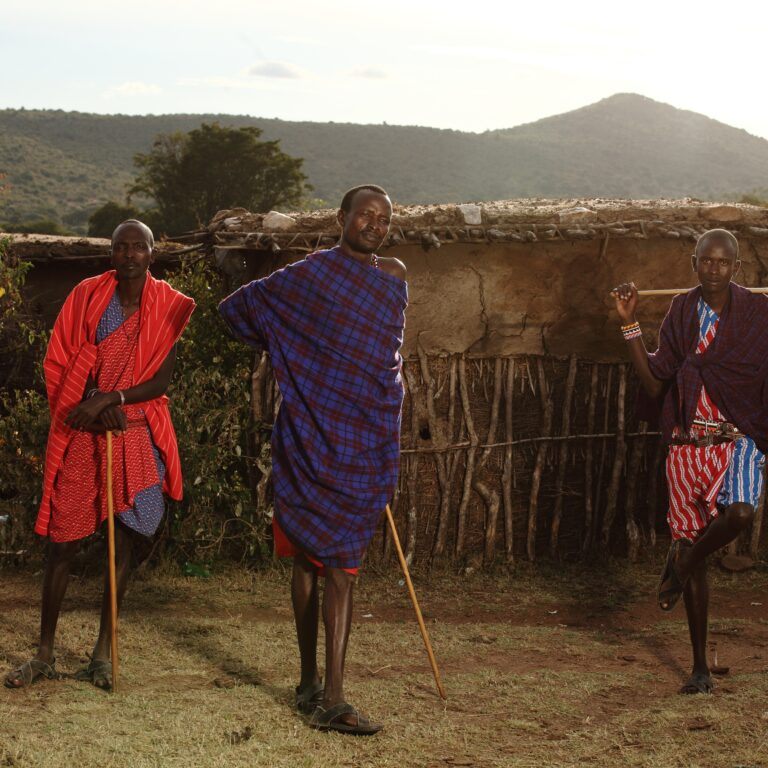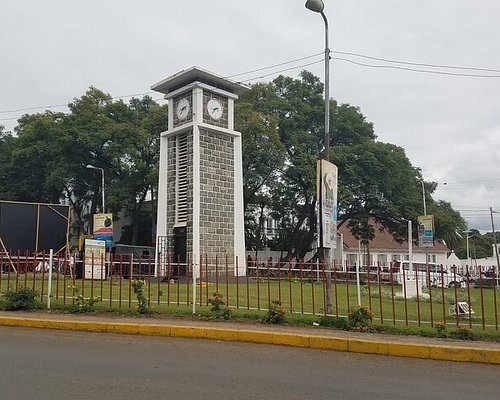The allure of solo travel for women is undeniable. It’s a journey of profound self-discovery, unparalleled freedom, and an opportunity to forge an intimate connection with new cultures and landscapes on your own terms. Yet, embarking on such an adventure also comes with unique considerations, especially regarding personal safety. While the world is, for the most part, welcoming and safe, being prepared and proactive is key to ensuring your solo female travel experience is not only exhilarating but also secure and joyful.
For safe solo female travel, prioritize thorough research on your destination, stay aware of your surroundings, and trust your instincts. Consider downloading safety apps, sharing your itinerary with someone you trust, and being mindful of your belongings. Additionally, learn some basic phrases in the local language, and be cautious when walking alone at night. Far from fostering fear, smart safety practices empower you to navigate unfamiliar territories with confidence, allowing you to fully immerse yourself in the wonders of your chosen destination. Here are essential tips for solo female travelers, designed to keep you safe, informed, and ready for anything.
1. Research Your Destination Thoroughly
Knowledge is your most potent safety tool. Before you even book your flight, immerse yourself in comprehensive research about your chosen destination. Understanding your destination is vital. Familiarize yourself with its culture, customs, local laws, and recent news. Knowing the areas that are safe and those that are not can dramatically increase your comfort level and aid in preparation. Local Customs & Norms. Understand the cultural etiquette, especially regarding dress codes, greetings, and interactions between genders. Respecting local norms can help you blend in and avoid unintended offense or unwanted attention. Safe Neighborhoods. Identify areas that are known to be safe for tourists, especially at night. Look up crime rates, common scams, and areas to avoid. Transportation. Research reliable public transport options, reputable taxi companies, or safe ride-sharing apps. Women-Specific Advice. Seek out blogs, forums, or groups dedicated to solo female travel for your specific destination. These often provide invaluable, nuanced advice from women who have been there.
2. Share Your Itinerary
While the freedom of solo travel is appealing, it’s vital to have a trusted person back home who knows your whereabouts. Before embarking on your journey, share your travel itinerary with someone you trust. Include your flight information, accommodation details, and significant places you plan to visit. This ensures that someone knows where you are, enhancing your safety. Create a Detailed Itinerary. Include flight details, accommodation names and addresses, planned activities, and expected dates for moving between locations. Share with a Trusted Contact. Send this itinerary to a family member or close friend. Establish Check-in Times. Agree on regular check-in times (e.g., daily text, weekly call). If you miss a check-in, your contact knows to initiate a safety protocol. Inform Your Accommodation. When checking in, let the front desk know your estimated departure date and if you’ll be out late.
3. Choose Accommodations Wisely
Your choice of lodging significantly impacts your safety and comfort as a solo female traveler. Opt for accommodations with good reviews, especially those from solo female travelers. Look for places that offer women-only dorms or rooms. Proximity to tourism hotspots and a reputable reputation can provide peace of mind during your stay.
Read Reviews. Prioritize reviews from other solo female travelers. Look for comments on security, location, and staff attentiveness. Location. Choose accommodations in well-lit, busy areas, especially if you plan to walk around after dark. Avoid isolated or hard-to-reach places. Security Features. Look for properties with 24/7 reception, good locks on doors and windows (consider bringing a portable door lock for extra peace of mind), secure entry systems, and perhaps even female-only dorms in hostels. Trust Your Gut. If a place feels off when you arrive, don’t hesitate to find an alternative.
4. Choose a Reputable Tour Company
For adventure trips like safaris, mountain climbs, or specialized excursions, selecting a highly reputable tour company is paramount. If you plan to join tours or activities, research and select reputable companies with good reviews. A reliable tour company typically prioritizes the safety of their guests, providing a more secure experience than lesser-known operators. Safety Records. Research their safety history and protocols rigorously. Licensed and Insured. Ensure they are properly licensed and have comprehensive insurance. Experienced Guides. Verify that guides are certified, knowledgeable, and trained in first aid and emergency procedures. Ethical Practices. For certain destinations (e.g., Kilimanjaro), check if they adhere to ethical guidelines (like KPAP for porter welfare). A company that values its staff often extends that care to its clients.
5. Stay Connected
A functional phone is your lifeline. Ensure you have a reliable means of communication. Purchasing a local SIM card or researching Wi-Fi availability can help you stay in touch with family and friends, as well as access maps and travel apps during your adventure. Local SIM Card. Purchase a local SIM card upon arrival for affordable calls, texts, and data. This allows you to use maps, research on the go, and contact emergency services. Power Bank. Always carry a fully charged portable power bank. Running out of battery can be a significant safety risk. Emergency Numbers. Know the local emergency numbers (police, ambulance) and store them in your phone. Offline Maps. Download offline maps (e.g., Google Maps, Maps.me) before you lose signal or data.
6. Be Aware of Your Surroundings
This is a fundamental safety practice that applies universally, but takes on heightened importance when solo. Stay vigilant at all times. Pay attention to the people around you, the atmosphere, and any unusual behavior. Awareness can often prevent situations from escalating, allowing you to respond appropriately and stay safe. Minimize Distractions. Avoid walking with headphones blaring or constantly looking at your phone. Be present and observe who and what is around you. Scan Your Environment. Before entering a new space (like a restaurant or shop), take a quick moment to assess it. Avoid Isolated Areas. Steer clear of unlit streets, deserted parks, or remote trails, especially after dark. If you find yourself in an uncomfortable situation, leave.
7. Trust Your Instincts
Your intuition is a powerful, innate warning system. If a person, place, or situation feels “off” – even if you can’t logically explain why – trust that feeling. Your intuition is a powerful tool. If something doesn’t feel right, don’t hesitate to leave the situation. Trust in yourself and your feelings; they are often the best guide in unfamiliar environments. Don’t Overthink It. Don’t dismiss a gut feeling as irrational. Your subconscious might have picked up on subtle cues of danger. Remove Yourself. If a situation makes you uneasy, politely excuse yourself, change direction, or enter a public place. Your safety is always worth any perceived awkwardness.
8. Blend In
While expressing your individuality is great, blending in can significantly reduce unwanted attention in unfamiliar environments. When traveling, try to blend in with locals. Avoid wearing flashy accessories and adopt the clothing style of the area. This makes you less noticeable as a tourist and can help you avoid unwanted attention. Respect Local Dress Codes. Especially in conservative countries, dress modestly according to local customs. This shows respect and avoids drawing attention. Avoid Flashy Displays. Keep expensive jewelry, electronics, and large amounts of cash out of sight. A simple watch and minimal accessories are best. Act Like You Know Where You’re Going. Even if you’re lost, try to look confident. Step into a cafe or shop to consult your map rather than looking obviously disoriented on the street.
9. Secure Your Belongings
Theft can happen anywhere, but solo travelers might be perceived as easier targets. Taking care of your belongings is essential. Use lockable bags, keep valuables close, and consider using anti-theft travel gear. Always be cautious when using public spaces or transportation systems. Anti-Theft Bags. Consider bags with slash-proof material, lockable zippers, and hidden pockets. Keep Valuables Out of Sight. Don’t wear a wallet in your back pocket. Use a cross-body bag worn in front or a money belt under your clothes. Hostel Lockers. If staying in hostels, always use lockers for your valuables and bring your own sturdy lock. Never Leave Bags Unattended. Even for a moment in a café.
10. Have a Plan for Emergencies
Being prepared for the unexpected can turn a crisis into a manageable challenge. Prepare for potential emergencies, whether that’s knowing your embassy’s location or having emergency contacts readily available Safety Tips for Solo Female Travelers. Familiarize yourself with local emergency numbers and have a plan for situations that may arise. Emergency Contact Cards. Carry cards with your blood type, allergies, emergency contacts, and insurance information in both English and the local language. Photocopies of Documents. Keep copies of your passport, visa, and flight tickets separate from the originals. Emergency Cash. Hide a small amount of emergency cash ($50-$100) in a separate, secure location (e.g., a spare shoe, a hidden pocket in your luggage). Embassy/Consulate Information. Know the location and contact details of your country’s embassy or consulate in your destination.
11. Don’t Overshare on Social Media
The thrill of sharing your adventures in real-time can be tempting, but it can also compromise your safety. While it’s tempting to share your travel experiences in real-time, be cautious about oversharing Safety Tips for Solo Female Travelers. Limit your posts to avoid disclosing your location while traveling and securely set your social media privacy settings. Delay Posts. Wait until you’ve left a location before posting pictures or check-ins. Be Vague. Avoid sharing precise locations or identifying details that indicate you’re traveling alone. Privacy Settings. Ensure your social media accounts have robust privacy settings.
12. Stay Confident
Projecting an air of confidence can deter potential opportunists. Confidence can significantly impact how others perceive you Safety Tips for Solo Female Travelers. Walk with purpose, make eye contact, and assertively communicate. A confident demeanor may deter unwanted attention while exploring. Walk with Purpose. Stand tall, make eye contact (but avoid prolonged staring, which can be misinterpreted in some cultures), and walk with purpose. Don’t Engage Unwanted Attention. Politely but firmly decline unwanted advances or solicitations and keep moving. Look Like You Belong. Even if you’re feeling a bit lost or overwhelmed, a confident demeanor can make a big difference.
13. Use Reliable Transportation
Transportation can be a common area for safety concerns, especially when solo. Select trustworthy transportation options, whether it’s public transit, reputable taxis, or rideshare services. Avoid hitchhiking as it can introduce unnecessary risks. Traveling solo can be one of the most rewarding experiences of your life. By following these safety tips, you can enjoy your adventures and make the most of your travels while ensuring your security and peace of mind. Safe travels!
Research Before You Go. Understand standard taxi fares, reputable ride-sharing apps (like Uber/Bolt in some African cities), and common public transport routes. Avoid Unmarked Vehicles. Never get into an unmarked taxi or a private car offering a ride. Confirm Destination & Price. Always confirm your destination and agree on a fare before starting a taxi journey (if meters aren’t used). Share Your Ride. Many ride-sharing apps allow you to share your trip details with a trusted contact.
- Is Tanzania Safe for Solo Female Travelers?
- Places to visit in Tanzania as a Solo Female traveller
- Top tips for solo female travellers in Africa
- Contact us
- 11-Day Tanzania Safari for solo travelers
Safety Tips for Solo Female Travelers FAQs
What’s the single most important safety tip for solo female travelers? Trust your instincts. If a person, place, or situation feels “off” to you, remove yourself from it immediately, regardless of whether you can logically explain why.
How important is sharing my itinerary? Extremely important. Always share your detailed itinerary and check-in times with a trusted friend or family member back home, ensuring someone knows your general whereabouts.
What should I look for in safe accommodation? Prioritize places with good reviews from other solo female travelers, 24/7 reception, secure entry systems, good locks on doors/windows, and a location in a well-lit, busy area.
Should I always use a local SIM card? Yes, it’s highly recommended. A local SIM allows for affordable communication, access to maps, and the ability to call emergency services, providing a vital safety net.
How can I avoid drawing unwanted attention? Blend in by respecting local dress codes, avoiding flashy displays of wealth (expensive jewelry, electronics), and trying to look confident and purposeful even if you’re unsure of your way.
What documents should I always have copies of? Keep physical and digital copies of your passport, visa, flight tickets, travel insurance details, and emergency contacts. Store them separately from the originals.
Is it safe to post on social media in real-time while traveling solo? It’s generally safer to delay your social media posts until you’ve left a location, and avoid sharing precise, real-time identifying details that indicate you are traveling alone.
What kind of transportation should I use? Stick to reputable and known transportation services. Research local taxi companies or verified ride-sharing apps. Avoid unmarked vehicles or accepting rides from strangers.
What should my emergency plan include? Knowing local emergency numbers, having copies of critical documents, carrying emergency cash separately, and knowing the contact details and location of your country’s embassy or consulate.
How can I project confidence even if I’m nervous? Walk with purpose, make appropriate eye contact, avoid fiddling with your phone excessively, and have a polite but firm way to decline unwanted conversations or advances.
Solo Female Travelers’ Packing List. A Solo Female Traveler’s Packing List includes essentials for safety, comfort, and versatility. Key items are lightweight clothing, a secure anti-theft backpack, personal hygiene products, travel documents, a first-aid kit, a reusable water bottle, a power bank, and a hidden money belt. Pack multipurpose items and prioritize minimalism to stay mobile and stress-free. Always include copies of IDs, emergency contacts, and a basic safety whistle or alarm. Comfort, safety, and practicality are the top priorities.
Final thought
Solo female travel is an incredibly enriching and empowering experience that every woman should consider. While it requires a heightened sense of awareness and preparation, these safety tips are not meant to instil fear, but rather to equip you with the knowledge and tools to navigate the world confidently. By being proactive, trusting your instincts, and respecting local customs, you can unlock the transformative power of independent travel, creating unforgettable memories and proving your own incredible strength and resilience.








